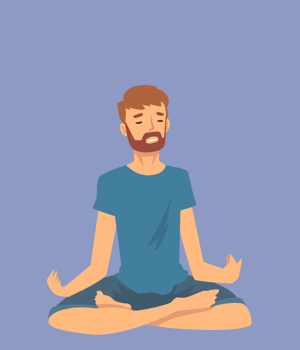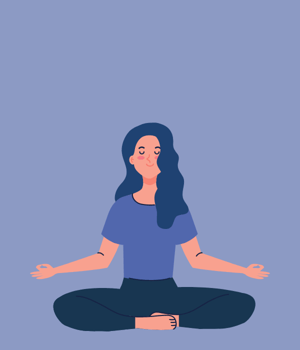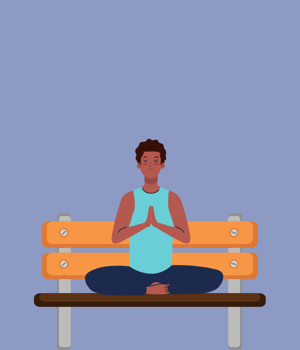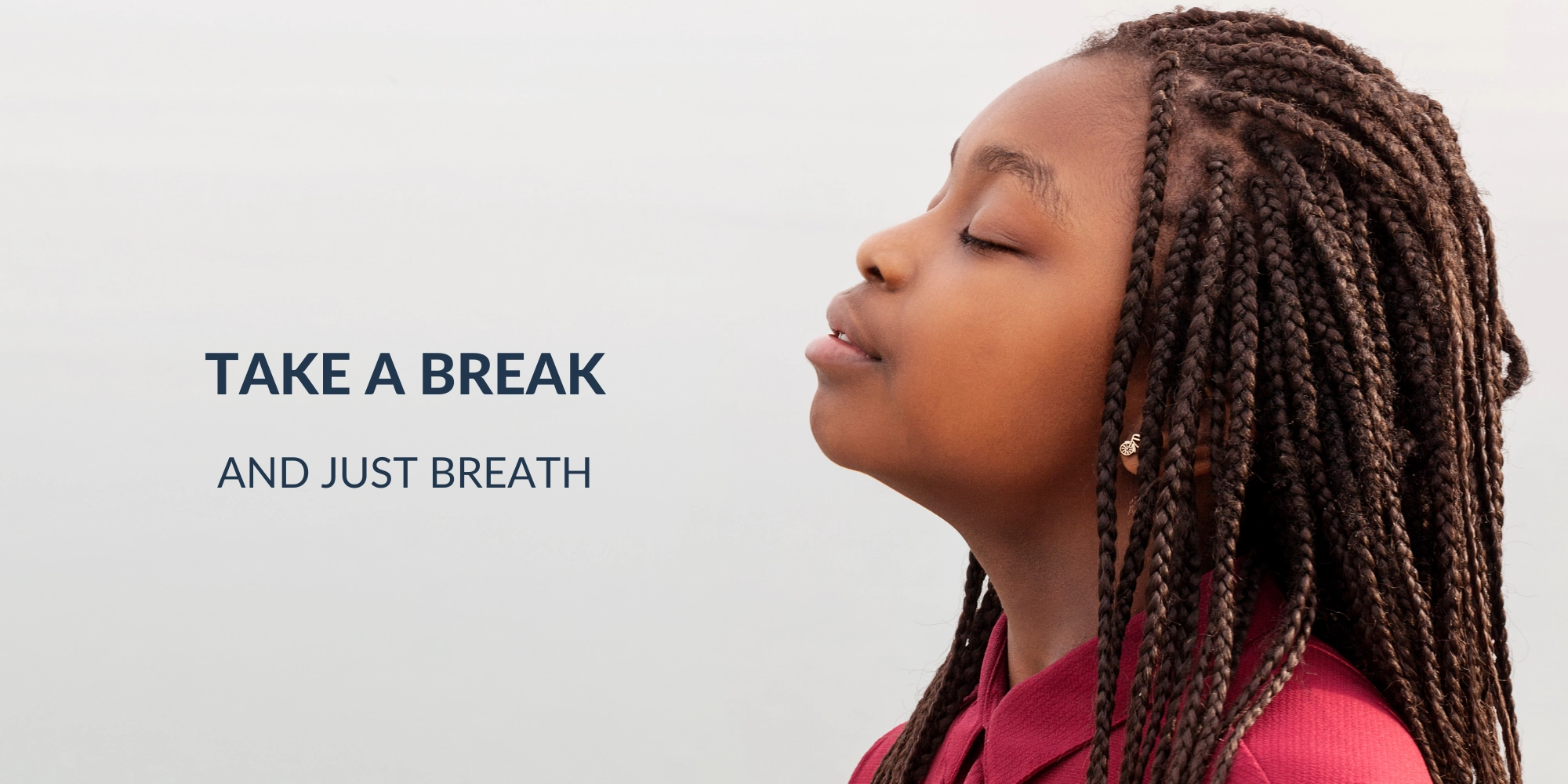"Breathwork" comprises a number of breathing techniques that involve controlling the breath for the purpose of healing. Anyone who's ever taken a meditation or yoga class will recognize the suggestion to "return to the breath."
Table of Contents
- Some Kinds of Breathwork
- Benefits of Breathwork
- Physical Benefits of Breathwork
- Mental Benefits of Breathwork
- Spiritual Benefits of Breathwork
- Three Simple Breathwork Exercises for Beginners
Breathing is, of course, foundational to our lives, but many people have forgotten how to breathe for maximum effect—or perhaps never even learned.
People experiencing anxiety may find that their breathing becomes shallow. But this relationship between mood and breath can work the other way, too — the breaths we take can influence our state of mind. Science suggests that using slower breathing to control mood is safe, easy, impossible to exhaust, and (best of all) effective.
Some Kinds of Breathwork
Breathwork is the most ancient and universal tool for wellness. It consists of many fascinating types of practice. These include:

Clarity Breathwork / Rebirthing
Clarity Breathwork, also known as Rebirthing, centers on the idea that being born is traumatic, and people need to go through a specific breathing ceremony or ritual to be reborn. This ritual was invented by Leonard Orr, a psychotherapist who was inspired by his own personal experience. Breathwork training for Rebirthing can include somatic therapy techniques and a counselor who helps talk practitioners through their experiences.
Holotropic Breathwork
The name Holotropic means "moving toward wholeness" (from the Greek, "holos," meaning "whole" and "trepein," "moving toward something"). The aim is to achieve an emotional and psychological breakthrough leading to a feeling of peace and ridding oneself of trauma.
Holotropic breathwork was pioneered in the 1970s by psychiatrists Stanislav and Christina Grof to "achieve altered states of consciousness (without using drugs) as a potential therapeutic tool." It involves controlled hyperventilation with the aim of leading to a mental shift or breakthrough. Intense music often provides a background soundtrack to go along with the breathwork, which is guided by a practitioner.

Shamanic Breathwork
Shamanic breathwork uses the breath to connect to a spiritual world, aiming to alter the practitioner's consciousness and enter into an entranced state, usually under the supervision of a spiritual guide, or shaman.
Benefits of Breathwork
Practitioners pursue breathwork for a number of reasons, among them:
.png?width=2000&name=Breathwork%20Banner%20(2).png)
Physical Benefits of Breathwork
Controlled breathing works by stimulating the vagus nerve, a nerve that connects the brain to the rest of the body and plays an important role in our parasympathetic nervous system. The parasympathetic nervous system is part of the body's autonomic nervous system. It controls our "rest and digest" functions and regulates the body's energy and functions like digestion and urination (which, as many of us know, can be directly impacted by mental state).
When people breathe deeply into their diaphragm in a slow and relaxed manner, the vagus nerve sends a message of calm to the body. Then, according to Scientific American, "the heart rate slows and becomes regular; blood pressure decreases; muscles relax.” When the brain receives these messages, it, too, relaxes, and the result is an overwhelming feeling of peace.
Heart rates can be slowed by controlled breathing, inducing a feeling of stability and calm.
Mental Benefits of Breathwork
The most immediate mental benefits of breathwork are a sense of focus, calm, and increased clarity. The human mind can only concentrate on so much at any one point. When one is focusing on breathing, the focus is diverted from circular or anxiety-inducing thoughts.
There are promising examples of how different breathing techniques can bring mental health benefits. A breath-based meditation practice known as Sudarshan Kriya yoga, which alternates slow breaths with fast, stimulating ones, has been shown to enhance the effectiveness of prescription medication in combating severe depression.
The other part of the human nervous system is the sympathetic nervous system, which controls the "fight or flight" responses. Breathing can calm these responses to stress. Studies have also shown that breathing alone can combat job-related emotional exhaustion, stress, anxiety, and depression among patients suffering from chronic back pain. Breathwork can also boost resilience long-term.
Spiritual Benefits of Breathwork
In many ancient languages and systems of thought, "breath" and "spirit" share the same word. In Hebrew, for example, the words "Ruach" and "Nefesh" are both connected to the breath. In yoga, "pranayama," a system of regulated breathing, comes from two Sanskrit words, "prana," meaning life force, and "Yama," meaning control. For thousands of years, controlling the breath has been seen as a way of achieving a more enlightened state.
When in control of their breathing, many people feel more spiritual, more aware, and more in tune with external, cosmic energy. Holotropic breathing, described above, can also feel like a profound experience for many, on par with taking psychedelics and resulting in a feeling of altered consciousness.
Three Simple Breathwork Exercises for Beginners
Breathwork does not have to be complicated. Here are three simple breathwork techniques to try:

-
1. 4-7-8 Breathing (Relaxing Breath)
This technique was pioneered by integrative doctor Andrew Weil, M.D. It's important to start in a comfortable position, with the lungs completely free of air.
Next, practitioners breathe in through the nose (4 seconds), hold their breath (7 seconds), then breathe out through the mouth (8 seconds). This should be repeated at least 4 times and can be done additional times. Some add visualizations to this. These could involve picturing the flow of air in and out of your nose and diaphragm, or imagining a soothing landscape like a beach, to help reach a state of relaxation.
 2. Box Breathing
2. Box Breathing
Box breathing receives its name because all the breaths are the same length, like the sides of a square. Box breathers, including Navy SEALS, inhale for four slow beats, hold for four slow beats, exhale for four slow beats, then hold that for four slow beats. The whole cycle can be repeated until feelings of calm and focus are fully achieved.

-
3. Coherent Breathing: the 5-5 Breath
Coherent breathing involves slowing down the pace of breathing to just five slow breaths a minute. This technique reduces anxiety and can help stabilize the heart rate.
Just Breathe
For those fascinated by the world of breathwork and who would like to inhale more knowledge and reap substantial breathwork benefits, head to Sofia. Sofia is a resource to help you get personalized care for your physical, mental, emotional, and spiritual health needs. Sofia's practitioners are there to consult concerning holistic health and offer any number of other great stress-reduction techniques—come to Sofia and get in touch with one of our specialists today!





-4.webp)

